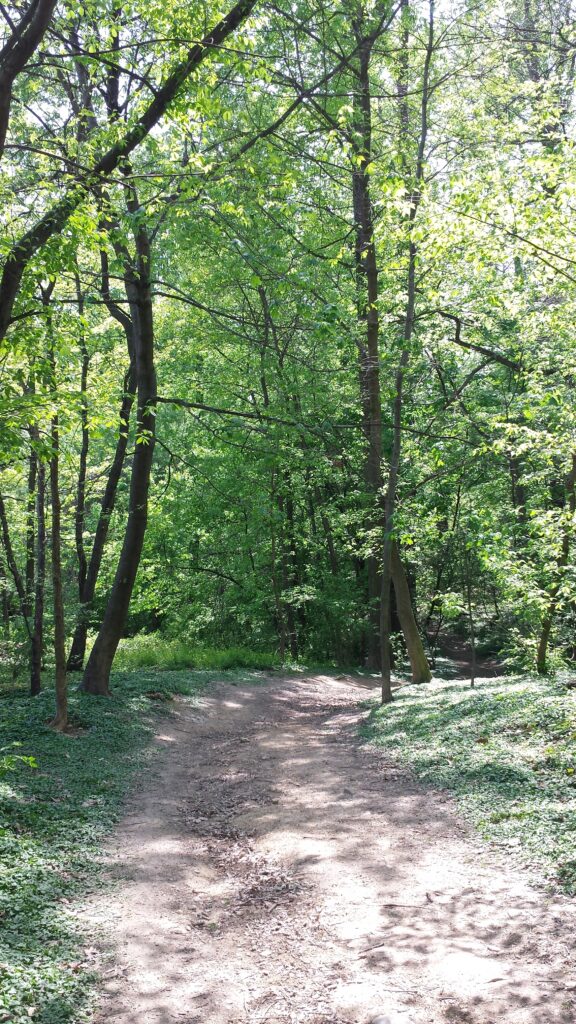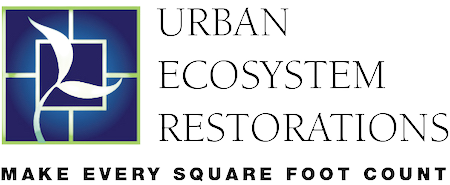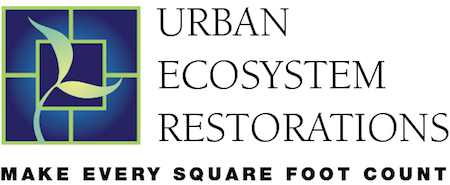Written by Diane Cameron, UER Expert Advisory Panel Member
April 20, 2017

When I walk in my local neighborhood park, it’s the woods that draw me. Capitol View-Homewood Local Park serves residents from a large part of Kensington and Silver Spring — for soccer, softball, and parties at the community building. But it’s the woods that form the bridge between people and nature; it’s the woods that define this local park and make it a destination for so many neighbors. People walking their dogs, and parents with young children, join me on the short trail through the woods. This small woodland, which some would call an urban “forest patch,” is a natural shelter that transports me to not only a different physical space but a different mental space as well. This woodland provides a place for peaceful reflection; it lets me breathe cleaner air; and it gives me the quiet space necessary to hear the drumming of pileated woodpeckers, the cooing of doves, and, on rare occasions, barred owls having a conversation.
In our backyard about a block away from the park, we have a large white pine, a small redbud tree, and some shrubs. About two weeks ago, my husband installed a beehive, and we are happy to see our bees gathering nectar and pollen from our flowering native trees. Our backyard forest patch connects with that of our neighbors. With a few more neighbors planting trees in their backyards, we could have full continuity with these park woods – a forest corridor letting wildlife, breezes, and water flow freely, heard but not seen.
Forest patches can and should exist across property boundaries so that they can reach a meaningful size and provide respite to many people as well as other flora and fauna. They need the freedom to begin in parklands and stretch between houses and across subdivisions. When they do, they become the self-sustaining, living systems that they were meant to be – and that benefits us all in so many ways.
Right now, the Montgomery Parks Department is conducting a public survey as part of its periodic park planning exercise known as the PROS Plan (Parks, Recreation, and Open Space). So far, 315 people have taken this survey, and, thankfully, “Preservation of natural resources” is the number one priority so far.
The use of both public parks and private lands for ecosystem restoration could not be more important in this day and age. The threats of global climate change, loss of biodiversity, and declines in public health related to widespread environmental degradation are very real, and the time to act is now.
You can take this PROS survey – I encourage you to do so. Go to: http://www.montgomeryparks.org/projects/public-input/#peak_democracy
Our remaining natural resources need to be preserved and restored. This includes invasive plant removal and woodland restoration, and this work needs to be stepped up county-wide.
The last PROS Report done in 2010 was based on a Vision 2030 survey, which had 555 respondents; you can read the report here:
http://www.montgomeryparks.org/wp-content/uploads/docs/vision2030-surveyfindings-report.6-2010.pdf
These days, particularly as the County’s population increases, I am concerned that the managers and commissioners of the County parks may feel pressure to develop our parks’ natural areas and forest patches into sports facilities and recreation buildings. They may believe that this kind of development is what the community wants, or they may believe that the kind of enjoyment and health benefits we get from natural areas (like urban forest patches) are a lower priority than the benefits we get from engineered sports and recreation facilities.
Contrary to this way of thinking, enjoyment of (and exercise in) natural areas is an activity that people from all over the world, and of all ages, have as a basic need, and the academic research findings demonstrating the positive health effects of spending time in these spaces are proliferating rapidly. See, for example, this review by Dr. Kathleen L. Wolf of the University of Washington from 2012. This need for restored woodlands in local and regional parks will continue to grow as Montgomery County continues to urbanize. We need to preserve and restore our park woods and other natural areas, and not see them as “empty space waiting to be built upon.”
These natural areas serve so many different beneficial purposes, including making us healthier in mind and body. The late, great Bob DeGroot, who founded the Maryland Alliance for Greenway Improvement and Conservation (MAGIC), taught me (and many others) about the need for connected corridors of woods and natural areas – so that preserved and restored woods and forest patches will provide ways for wildlife, plants, and water to move and flow, creating greater value for all.
Let’s help Montgomery Parks serve all of us by prioritizing our natural resources and thereby improving our lives and those of future generations as well.

